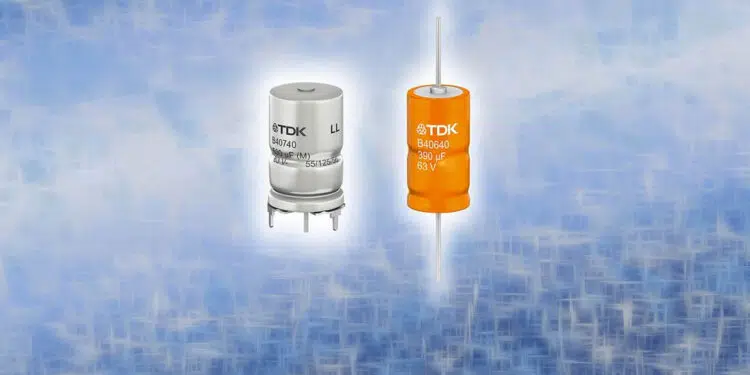TDK Corporation presents with the B40640B* and B40740B* series hybrid polymer capacitors with a very high ripple current capability increased by up to 29% compared to preceding types.
The ripple current capability is now up to 35 A (20 kHz, 125 °C). The new types are designed for a rated voltage of 63 V, cover a capacitance range from 390 µF to 720 µF, and offer an extremely low ESR value. For example, with a cup size of 16 mm x 30 mm (D x H) and an ambient temperature of 20 °C, an ESR of 3.9 mΩ at 20 kHz can be achieved. Even at an operating temperature of -40 °C, the ESR is just 5.4 mΩ.
Due to their highly rugged construction, the capacitors offer a high vibration strength of 60 g and can be operated at up to 150 °C. A very low thermal resistance is achieved due to the inner structure of all axial-hybrid polymer capacitors, which are optimized for the thermal connection to a heatsink. Moreover, the axial design ensures a stable connection to the heatsinks throughout the service life. Depending on the capacitance values, the dimensions vary between 14 mm x 25 mm and 16 mm x 30 mm (D x H). The RoHS-compatible capacitors are available in axial-lead (B40640B*) and solder star (B40740B*) designs, both with and without PET hose.
The rugged design and excellent electrical parameters of these capacitors are ideally suited to automotive applications in 48 V on-board supplies.
Main fields of application
- Automotive applications for 48 V on-board supplies
Main features and benefits
- Very high ripple current capability of up to 35 A (20 kHz, 125 °C)
- Extremely low ESR value of just 3.9 mΩ at 20 kHz and 20 °C
- High vibration strength of 60 g






























